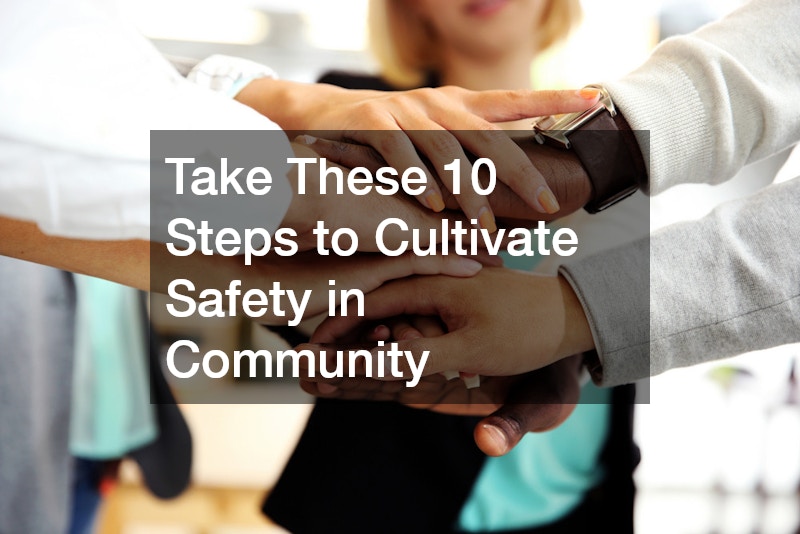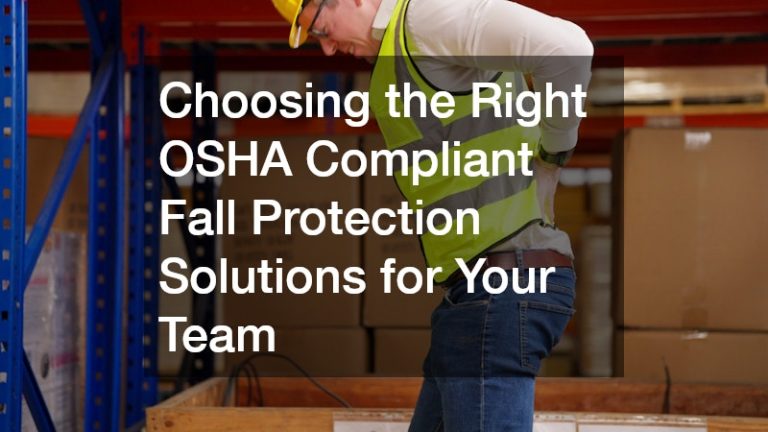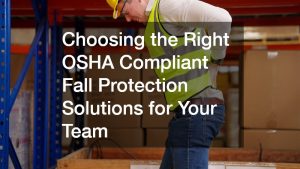Creating a safe community is essential for the well-being of all its members. Safety goes beyond just physical security; it encompasses emotional and social well-being, establishing an environment where people feel secure to express themselves and seek help when necessary. By taking proactive steps towards cultivating safety, we can ensure that our neighborhoods thrive, fostering connections and building trust among residents.
As we navigate life’s challenges, the role of safety in community becomes increasingly critical. From ensuring secure environments in our homes to fostering supportive relationships with neighbors, the collective effort to establish safety can significantly impact how children grow up and how adults engage with one another. In this article, we will explore ten practical steps to cultivate safety in our communities, providing methods and ideas that everyone can implement.
By adopting these strategies, we contribute positively to our neighborhoods’ safety and quality of life. Each step focuses on different aspects that require attention, from physical infrastructure to emotional health. As we work together, we can create a safer, more welcoming community for everyone.
Establish Healthy Boundaries

The concept of boundaries plays a vital role in maintaining safety in community. Healthy boundaries ensure that individuals feel secure in their personal spaces, such as having proper fencing around homes. Engaging a local fencing contractor to help install fences not only enhances personal security but also sets clear lines defining private property and public areas.
Establishing boundaries extends beyond physical walls; it includes emotional and social limits as well. By clearly communicating expectations and limits with neighbors, residents can foster a culture of respect and safety. This mutual understanding minimizes potential conflicts and promotes a peaceful coexistence within the community.
Furthermore, when boundaries are respected, individuals feel empowered to participate actively in community life. Securing locations like playgrounds and parks with proper fencing adds an extra layer of safety, allowing families to enjoy public spaces without fear. Thus, setting boundaries is a foundational step toward building a resilient and secure community.
Create a Structurally Sound Environment
Safety in community is heavily influenced by the structural integrity of homes and public buildings. A structurally sound environment ensures that families are protected from potential accidents or hazards, with well-maintained roofs being one of the primary concerns for homeowners. Investing in roof repair not only provides shelter but also contributes to overall security and comfort.
Additionally, structural safety plays a crucial role in emergency situations. Buildings that are properly constructed and maintained are less likely to suffer severe damage during natural disasters, protecting residents and minimizing risk. This commitment to structural safety fosters a culture of preparedness and resilience, essential traits for any community.
Communities that prioritize structural integrity also tend to nurture economic stability and growth. Safe buildings attract families and businesses, creating vibrant neighborhoods filled with opportunities. Therefore, ensuring that homes and public areas are up to standard is instrumental in cultivating safety and a strong sense of community.
Have Consistent Expectations
Having consistent expectations across a community contributes significantly to safety in community. This is particularly evident in environments like preschools, where children need clear guidelines and routines to thrive. A consistent schedule not only helps maintain order but also helps children feel secure, allowing for a safe and productive learning experience.
Moreover, establishing consistent expectations isn’t restricted to educational settings. Parents and caregivers can work together to create a cohesive set of norms and values that guide children’s behavior throughout the community. By reinforcing these shared expectations, families can foster a sense of unity and safety for their children.
Creating a culture of consistency also allows for effective communication among families, promoting engagement in communal activities. Events that celebrate achievements in safe environments can help parents and children alike understand the importance of a secure community. Ultimately, consistent expectations serve as the backbone of a safe and supportive environment.
Ask for Support
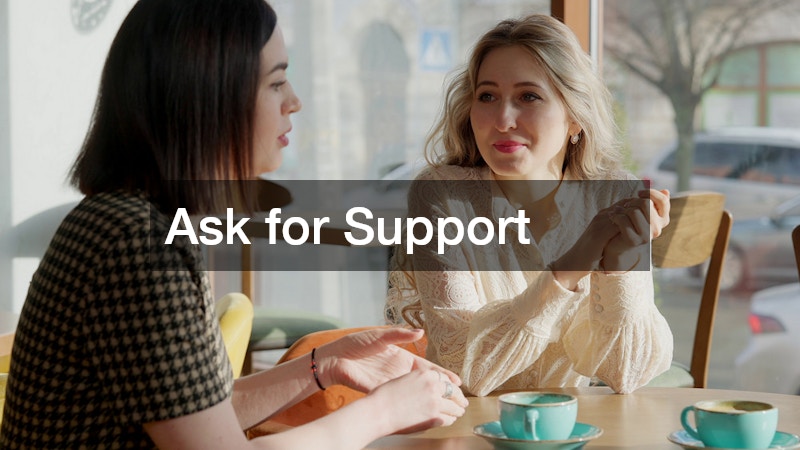
Safety in community often comes from a robust support system, especially for parents. Engaging with other parents or utilizing daycare services provides a network of assistance that can alleviate some of the stresses associated with raising children. A strong support network can play a significant part in fostering both mental and emotional well-being, creating a safer atmosphere for everyone.
Additionally, support groups help parents share experiences and strategies, thereby reinforcing norms related to safety and care. Networking within communities allows individuals to pool resources, ranging from childcare to safety education. This collaboration not only enhances individual capacities but strengthens community resilience.
Ultimately, asking for support serves as a learning opportunity for parents, aiding in establishing best practices for child-rearing and community interaction. When families strive towards seeking help and collaboration, they create an environment where everyone feels included and valued. Thus, reaching out for support is crucial for cultivating a safe and nurturing community.
Invest Time With Your Children
Investing quality time with children is a fundamental pillar of safety in community. Engaging in activities such as projects for toddlers and parents fosters bonding, establishing trust and security from an early age. These connections are crucial for a child’s emotional development and lead to a more resilient generation.
Furthermore, spending time together helps parents understand their children’s needs while also emphasizing the importance of safe practices. Families that engage in community service or organize playdates contribute positively to neighborhood safety. These activities not only enhance familial relationships but also encourage social interaction among peers.
When children see their parents involved in community activities, they adopt the same attitude, leading to a greater appreciation for public spaces and relationships. This investment of time creates a cycle of care and support that enhances safety in community as children grow into attentive and responsible members of society. Therefore, prioritizing quality time with children is essential for cultivating a safe and nurturing environment.
Prioritize Health
Physical fitness is a cornerstone of safety, as it contributes to both individual health and social connections. Communities that prioritize health through fitness initiatives can create safer, healthier environments for residents. One important aspect of maintaining health is addressing the upkeep of communal resources, such as public pools in neighborhoods.
Regular maintenance, like pool repair, ensures that public spaces remain safe for recreational activities and community bonding. Healthy community environments encourage individuals to stay active, participate in social activities, and engage in teamwork through various physical pursuits. This mindset fosters stronger relationships and reduces crime rates, resulting in a safer collective experience.
Moreover, promoting healthy lifestyles can lead to improved mental health, reducing incidents of stress and anxiety among community members. Communities that offer local fitness classes, outdoor activities, and health workshops take significant steps toward safeguarding the well-being of their residents. By prioritizing health, we create an environment where safety flourishes alongside vitality.
Have Fun

Incorporating fun activities into community life plays a vital role in promoting safety in community. Engaging residents through events fosters camaraderie and trust among neighbors, which is essential for creating a secure environment. A local pool company, for instance, can organize events that bring families together to strengthen bonds and enjoy recreational time together.
Community events create social networks that increase awareness of individual safety and well-being. When enjoyed regularly, these activities help break down barriers, making it easier for residents to support one another. The more connected individuals are, the more likely they are to look out for one another, ultimately leading to a healthier, safer atmosphere.
In conclusion, prioritizing fun in everyday community activities cultivates a positive association with safety. When residents engage joyfully, they build connections that can assist in crisis situations and enhance overall community resilience. Therefore, fostering enjoyable interactions is an essential step toward cultivating safety and harmony.
Cultivate Accessible Communication
For any community to thrive, accessible communication is paramount. Safety in community largely depends on the ability of residents to share information openly and constructively. Properly functioning communication tools, such as phones, enhance the capacity for residents to connect and support one another in times of need.
Regular community meetings and digital platforms can serve as effective communication channels to engage residents. By facilitating discussions on safety concerns, community members can collaborate to address issues and improve their surroundings. Additionally, communication helps to build trust, as transparency in dealings fosters a sense of security among community members.
Investing in resources like phone repair and alternative communication tools also contributes to ensuring that every member of the community stays informed. Regular updates and shared resources can keep individuals aware of local happenings, enhancing their connection to community life. Ultimately, cultivating accessible communication is fundamental for empowering residents, leading to a safer community for all.
Open Your Home
An inviting home can significantly contribute to safety in community by providing a welcoming atmosphere that encourages social connections. Home upgrades, such as foundation repairs and aesthetic improvements, can create an environment that invites neighbors and guests. By ensuring your home is a safe haven, you signal to others that your community values safety and hospitality.
Additionally, hosting gatherings or events at home allows for the sharing of ideas and experiences among residents. These opportunities can foster understanding and bolster community engagement as individuals come together for collective purposes. A stable and welcoming home serves as a cornerstone for nurturing relationships that enhance overall safety.
Furthermore, open homes symbolize a sense of trust and openness that strengthens community ties. When neighbors feel comfortable visiting each other’s homes, they develop a mutual support system that can step in during emergencies. This network, built on open communication, is vital for cultivating both safety and a sense of belonging within the community.
Secure Potential Hazards
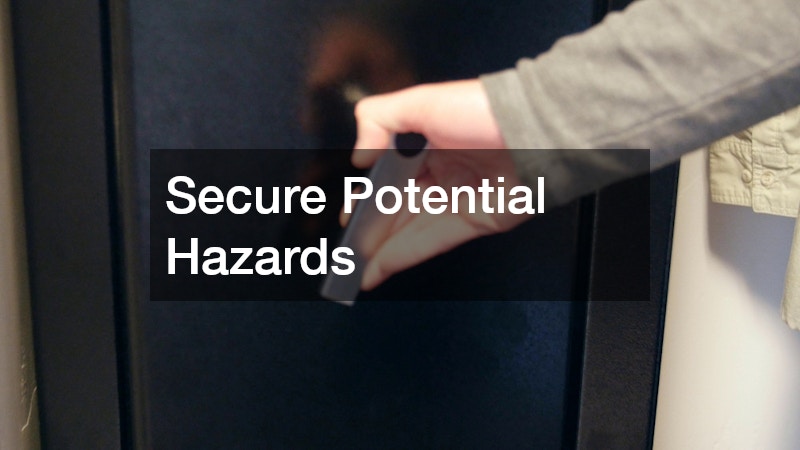
Safety in community involves recognizing and addressing potential risks within homes and public spaces. One of the most crucial steps families can take is to secure potentially hazardous items, such as medications and weapons, by using safes for sale. Properly locking away these items can prevent accidents and protect children from exposure to harmful substances.
Furthermore, community education on identifying hazards is vital in promoting overall safety. Parents can work together to share knowledge about keeping homes safe and exploring options for securing potentially dangerous materials. This shared awareness and commitment to safety significantly reduce risks and enhance community health.
By implementing strict safety measures and conducting regular home inspections, community members can actively contribute to a secure environment. Encouraging discussions around hazard identification can empower families to take necessary precautions in their homes. Ultimately, securing potential hazards is a vital step toward fostering safety for everyone.
Cultivating safety in community is a collective effort requiring proactive engagement from every individual. From establishing healthy boundaries and investing in physical environments to creating accessible communication and fostering fun interactions, every step contributes to a stronger, more secure neighborhood. Emphasizing support and connection among families, promoting health and wellness, and securing potential hazards can greatly improve the quality of life within a community.
By incorporating the discussed strategies, community members can work together to create environments where everyone feels valued and secure. The safety of a community is not just the responsibility of a few but rather the shared dedication of all residents to nurture and protect one another. Together, we can build a community that fosters safety, health, and happiness for every member.

